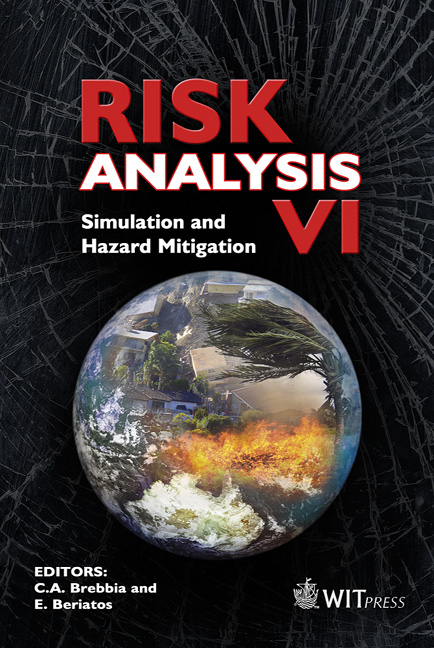Remote Sensing Satellite Imagery And Risk Management: Image Based Information Extraction
Price
Free (open access)
Volume
39
Pages
10
Page Range
149 - 158
Published
2008
Size
1,373 kb
Paper DOI
10.2495/RISK080161
Copyright
WIT Press
Author(s)
G. Bitelli & L. Gusella
Abstract
The introduction of high and very high resolution multispectral satellite imagery, characterized by ground resolution from one to a few meters, has lead to a new perspective in processes of risk estimation, mitigation and management. In particular, the possibility of obtaining, in a very short time, a wide-scene image of areas subjected to a crisis has become useful both for emergency management and for effective damage estimation. Examples of images in the immediate aftermath of natural disasters such as earthquakes, hurricanes, floods, fires, tsunami, volcanic eruptions, etc, have also been globally distributed through information media and web based image systems such as Google Earth. However, a concrete possibility of extracting quantitative information from such images is subject to several factors: first of all, accessibility in term of timing in image acquisition and in image delivery to stakeholders, followed by image quality (resolution, absence of clouds, geo-location, informative content, etc.), and finally the methodology for the information extraction process. After a review of the problem and of the current situation in terms of available data and applications, this paper focus on an approach for information extraction and quantitative image classification, in particular by object oriented analysis. One of the major objectives is to show the possibility of obtaining the outlines and the count of the buildings for an area affected by a severe disaster, saving human time in image interpretation in procedures of risk management and in estimating rebuilding costs; the integration of information coming from existing building databases is also considered. The experiences show the potential of the method and promising results in the classification accuracy. Keywords: remote sensing, disasters, damage assessment, segmentation.
Keywords
remote sensing, disasters, damage assessment, segmentation.





